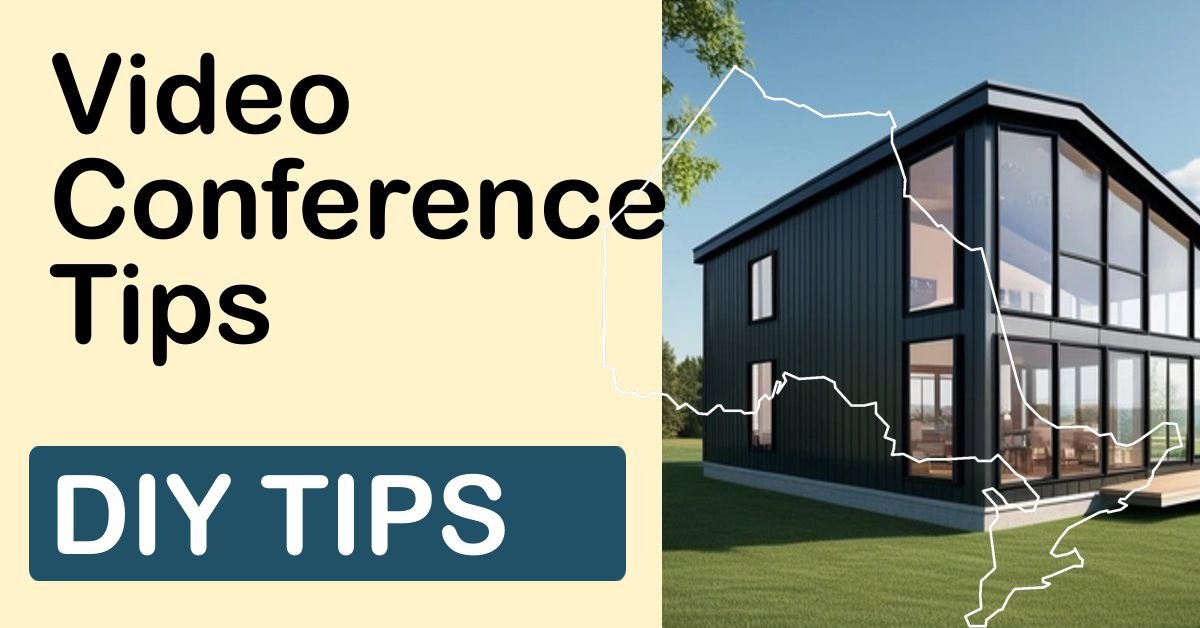Remote work transformed how professionals communicate. Video calls replaced boardroom meetings. Yet many struggle with poor audio, dim lighting, and unprofessional backgrounds. These DIY fixes elevate your setup without draining your budget.
Fix Your Lighting First
Natural light beats expensive equipment. Position your desk perpendicular to windows. Direct sunlight creates harsh shadows on your face. Overcast days provide soft, flattering illumination that cameras love.
Buy two clip-on desk lamps for $15 each. Place them at 45-degree angles from your screen. Point the lights toward your face, not directly at it. This three-point setup eliminates shadows under your eyes and chin.
Ring lights work for content creators, not professionals. They create unnatural circles in your pupils. Clients and colleagues notice this immediately. Stick with diffused lamp light for authentic appearances.
Upgrade Your Audio Quality
Laptop microphones capture every keyboard click. They amplify room echo and air conditioning hum. Invest $30 in a USB lavalier microphone that clips to your collar.
Position the microphone six inches from your mouth. Test audio levels before critical calls. Background noise drops by 70 percent with this simple switch. Your words arrive crisp and clear.
Closed rooms create echo chambers. Open your door slightly during calls. Add a throw rug if you have hardwood floors. Fabric absorbs sound waves that bounce off hard surfaces.
Master Your Camera Angle
Eye-level placement builds trust during conversations. Stack books under your laptop to raise the camera. Your webcam should align with your nose, not your chin. Downward angles make you appear subordinate or unprepared.
Sit two feet from your screen. Closer distances distort facial features. Further positions make you appear distant or disengaged. Frame yourself from mid-chest upward with breathing room above your head.
Clean your lens weekly with microfiber cloth. Fingerprints and dust blur your image. Colleagues assume technical incompetence when they see smudged video feeds.
Design Your Background Deliberately
Cluttered shelves distract viewers from your message. Remove personal photos, random trinkets, and competing visual elements. Leave three to five meaningful items that suggest competence.
Place a plant on one side for depth. Add a single framed credential or industry book on the other. Neutral walls work better than busy patterns. Your face becomes the focal point, not your décor.
Blurred backgrounds signal amateur hour. They create weird halos around your head when you move. Physical backgrounds demonstrate intentionality and professionalism that software cannot replicate.
Stabilize Your Internet Connection
WiFi drops during crucial presentations destroy credibility. Run an ethernet cable from your router to your desk. Wired connections deliver 10 times more reliability than wireless signals.
Close unnecessary browser tabs before calls. Streaming services and cloud backups consume bandwidth. Check your upload speed at speedtest.net before important meetings. You need minimum 5 Mbps upload for HD video.
Position your router in a central location. Thick walls block wireless signals. Restart your router weekly to clear cached data. These small actions prevent frozen screens and robotic audio.
Optimize Your Setup Ergonomically
Poor posture telegraphs fatigue and disinterest. Adjust your chair height so feet rest flat on the floor. Your elbows should bend at 90 degrees when typing. Slouching makes you appear unprofessional and uncommitted.
Position your screen an arm’s length away. Closer distances strain your eyes during long calls. Further positions force you to lean forward awkwardly. Maintain natural head position throughout conversations.
Take five-minute breaks between back-to-back calls. Stand up and stretch to reset your energy. Fatigue shows clearly on camera after three consecutive hours. Schedule buffer time to maintain peak performance.
Test Everything Before Important Calls
Join meetings five minutes early. Check audio input and output settings. Verify your camera displays properly. Technical fumbling at start time wastes everyone’s minutes and damages your reputation.
Keep backup equipment ready. Charge wireless headphones overnight. Save your mobile hotspot password somewhere accessible. Redundancy separates professionals from amateurs when primary systems fail.
Record practice sessions to evaluate your presence. Watch without sound to assess body language. Listen without video to judge vocal clarity. These reviews reveal improvement opportunities you cannot see in real time.
Maintain Professional Discipline
Mute yourself when not speaking. Background noises annoy other participants. Resist the urge to multitask during calls. Colleagues notice when your eyes wander to other screens or documents.
Look at your camera when speaking, not at faces on your screen. This creates eye contact that builds connection. Practice this until it becomes automatic. The difference transforms how others perceive your engagement.
Dress professionally from waist up. Your brain registers the difference even if others see only your torso. Full professional attire improves focus and performance during critical conversations.
The Investment Pays Returns
These improvements cost under $100 total. They deliver returns through stronger client relationships and enhanced team collaboration. Poor video quality costs you opportunities you never see.
Professionals judge your competence within three seconds of joining a call. Your setup communicates respect for their time. These DIY solutions position you as someone who takes communication seriously.
Start with lighting and audio upgrades today. Add other improvements throughout the month. Small refinements compound into significant competitive advantages in remote work environments.
Homeowners approach lawn care and driveway maintenance with the same DIY spirit that fixes video setups. You research techniques, gather affordable tools, and execute improvements that boost curb appeal. Both domains reward preparation, attention to detail, and willingness to invest sweat equity over expensive contractors.
